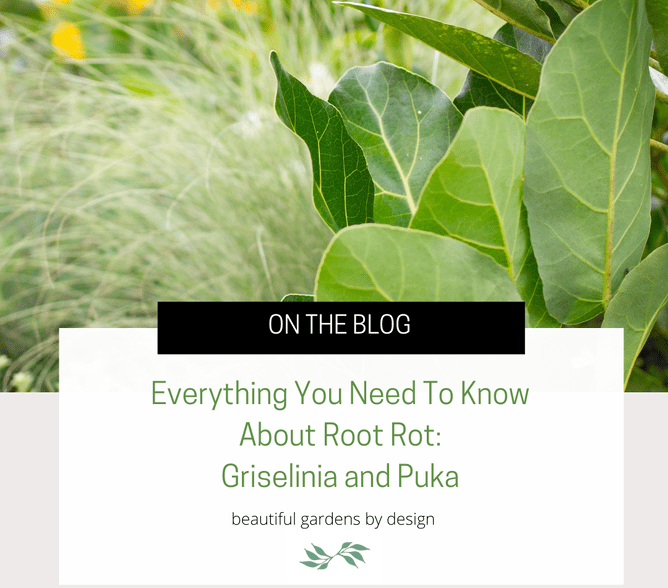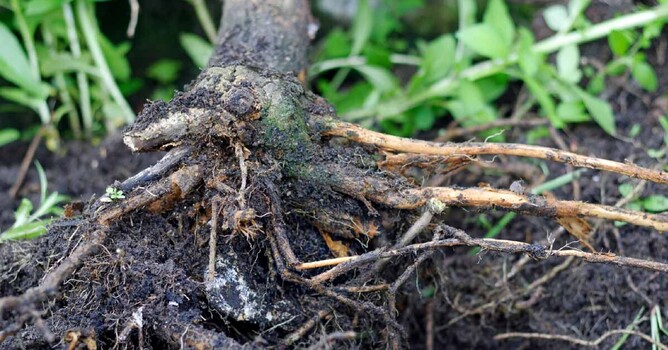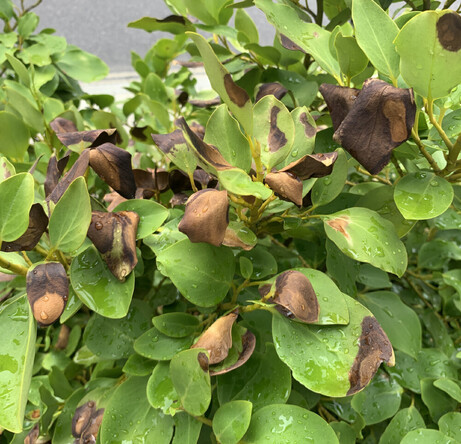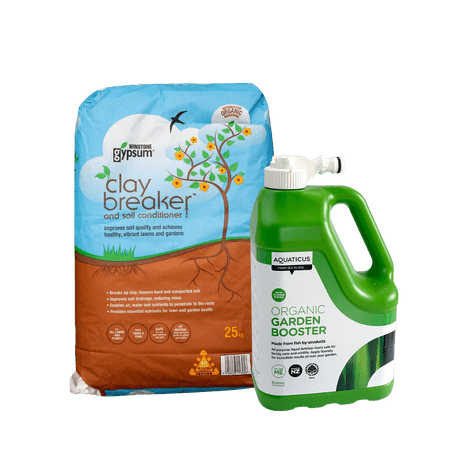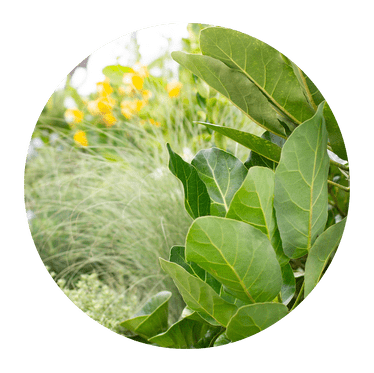What Is Root Rot?
Root rot is a condition that we frequently see on Auckland's North Shore. It is a result of water logged clay, often seen in the winter months. Root rot will kill plants if left untreated. As the first symptoms of root rot occur beneath the soil, it is often difficult to notice when the problem first arises. Once root rot establishes, symptoms display through yellowing or brown leaves or hindered growth.
Image from Gardeners Path.
Identifying Root Rot
Healthy roots should appear firm and white. The presence of root rot can be identified by the appearance of brown and soft roots. To check the condition of the roots, dig out the plant and inspect whether the roots appear healthy all the way from the base of the plant to the tips. As well as this, you can observe your plant and see if leaves are wilting or dropping, turning yellow or brown, whether flower blooms delay or growth hinders.
Griselinia displaying root rot symptoms
Image from Gardeners World Forum
Prevention
Root rot can occur when plants become water stressed. In drier months, ensure plants are kept well watered.
As well as this, root rot occurs when soil is not free draining resulting in plants becoming water logged. These conditions lead to the growth of a fungus-like pathogen.
Enhancing the health of your soil is beneficial for preventing root rot. Healthy soil enables plants to retain moisture in drier months, and provides them with favourable microbes.
We reccomend feeding the soil with Aquaticus Garden Booster, as this particular product helps protect the roots of your plants. For denser soil, we reccomend Gypsum to help improve drainage.
Apply mulch to your garden beds and ensure it is topped up as often as required.
Top Tip
A solution for root rot is to plant on a mound to raise the roots out of the clay soil. Dig a vase-shaped hole and plant in a soft mound within the hole.
Treatment
It is important to take action when root rot is suspected to increase your plants chances of survival.
Griselinea
If discovered early, organic options can be successful for treating root rot. Cut back any dead branches and apply Plantmate to the soil. For smaller plants, remove any brown, soft roots by cutting to just above the damaged area.
For more severe cases, a non organic option will need to be used to prevent the plant from dying. Cut back the dead branches, and spray Buxus Blight Fighter onto the leaves and base of the plant. If required, spray again after 28 days. After two months, apply Plantmate to the soil to prevent further damage. Wait one month before applying Plantmate once more.
Puka
Depending on the size of your Puka, dig up the plant and remove any brown, soft roots by cutting to just above the damaged area. As discussed previously, root rot is often a result of poor drainage in the soil. If you discover your Puka has root rot, you can plant the tree on a raised mound so that the excess water drains quickly. You may need to apply a fungicide aliette such as 'No Root-Rot'.
With these tips and advice, we hope that you are able to grow healthy Griselinia and Puka. If you would like further information or help, please book a garden consultation with us HERE.
